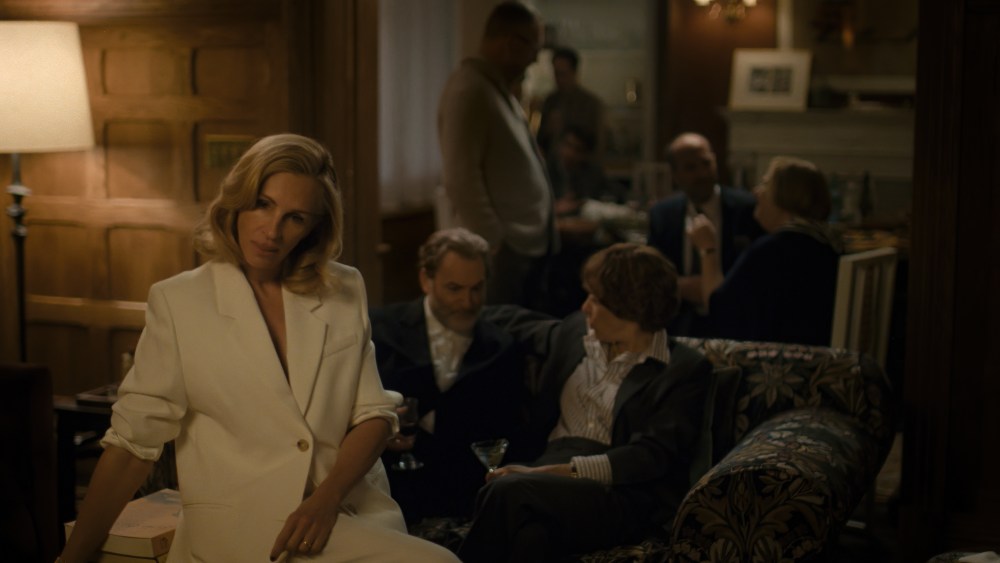Let’s get straight to the point: “After the Hunt” offers Julia Roberts her most impressive film role in two decades. While this is a significant claim — two decades being a long period in any context, especially for a movie star — it somewhat diminishes her prominent status. In Luca Guadagnino’s thought-provoking moral drama, Roberts showcases a range of emotions, from distressed to composed, intellectual to sensual, victim to villain. Given the limited substantial roles available for older women in film, this kind of complexity is quite rare in her recent work.
This intricate role is reminiscent of the challenging characters often played by Tilda Swinton, one of Guadagnino’s preferred actresses. For Roberts, a former mainstream darling, it represents a significant evolution in her craft. This element of surprise contributes to the depth of her performance and the film overall: set in a post-#MeToo environment, “After the Hunt” navigates intricate campus politics and reveals unexpected traits and frailties of characters you thought you knew. Now in her fifth decade in the industry, Roberts is ready to reawaken our perceptions.
For those who weren’t around or of age to appreciate it in the early 1990s, Julia Roberts was a major cultural sensation when she emerged onto the film scene. In Spring 1990, Roberts, then 22, made a notable appearance with her then-boyfriend Kiefer Sutherland at the 62nd Academy Awards, where she was both a presenter and a Best Supporting Actress nominee. Although she eventually lost to Brenda Fricker in “My Left Foot,” her career was about to skyrocket.
Just three days later, her breakthrough film “Pretty Woman” premiered, which wasn’t initially expected to succeed due to Roberts not yet being a household name and her co-star Richard Gere facing a career slump. Surprisingly, it dominated the box office, remaining in the Top Ten for an impressive 16 weeks. With a modest budget of $14 million, it ultimately grossed over $463 million worldwide.
Despite its conventional storyline, the film became a sensation thanks to Roberts’ engaging comic timing and vulnerability, which transformed a typical “fallen woman” character into an iconic role. Critics might have been skeptical when she received her second Oscar nomination for this role, but her talent was undeniable. She lost again, this time to Kathy Bates for “Misery,” but the buzz indicated her winning an Oscar was eventually inevitable.
Following “Pretty Woman,” Roberts experienced ups and downs in her career. While her name still drew audiences, she also faced a decline with poorly received films. However, she bounced back with hits like “My Best Friend’s Wedding” and “Notting Hill.” By the time “Erin Brockovich” arrived in 2000, Roberts had matured into a genuine industry veteran, a role that perfectly showcased her charm and dramatic capabilities. The film performed well, and when Roberts finally won the Best Actress Oscar, it felt like a long-awaited accolade.
While Roberts’ 21st-century film career has included notable performances, none have matched the impact of “Erin Brockovich.” Her more recent roles have often felt like underutilization of her talent. Nevertheless, “After the Hunt” seems to mark a revival of her career, although it’s unlike anything we’ve seen before. Playing Alma Imhoff, a Yale philosophy professor entangled in a volatile sexual assault case, Roberts reveals a complex character layered with insecurities and guardedness.
In exploring themes relevant to today’s social climate, the film draws inevitable comparisons to works like Todd Field’s “Tàr,” showcasing nuanced complexity. Watching Roberts embrace these darker themes and the complexities of age is compelling; she openly confronts the realities of power dynamics in relationships. Her warmth remains evident, but it’s nuanced—her character’s status relies on conditional admiration. Through “After the Hunt,” it will be fascinating to see how both the Academy and Hollywood respond to this revitalized and challenging role for Roberts.



